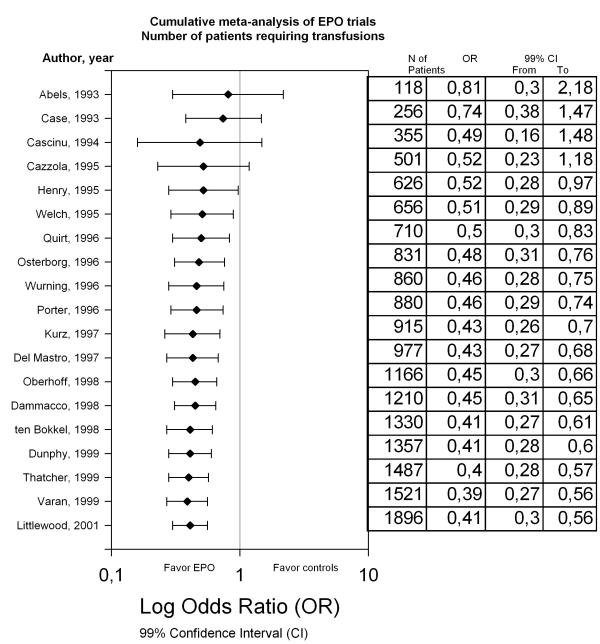
Cumulative meta-analysis (March 11, 2005).
This page is moving to a new website.
This figure below, published in
shows cumulative meta-analysis, which is the cumulated effects over time of studies in the use of erythropoietin (EPO) to treat cancer related anemia. The outcome variable, the odds ratio for whether a patient requires transfusion, showed a significant benefit for EPO and that sufficient evidence had already accumulated by 1995. If such a meta-analysis had been performed back then, there would have been no need to run the additional trials. These redundant trials are bad because they wasted scarce research dollars on a topic where sufficient information had already been accumulated to answer the research question. They are also bad because half of the patients in these post-1995 trials received no treatment or placebo, even though there was enough evidence at that time to show that this is an inferior option.
There has been a suggestion that any protocol submitted to an Institutional Review Board (IRB) should include a systematic overview or meta-analysis of the previous research (see Chalmers 1996), rather than just a simple literature review, to prevent future IRBs from making the same mistake of those that approved the post-1995 studies of EPO. In some situations, that is definitely overkill, but it is a suggestion worth serious consideration in other circumstances.

Since BMC Cancer is published with an open access license, I can freely reproduce this image without getting permission, as long as I cite the source. I try to preferentially cite such resources because they make it easy to include their content on my web pages and in my teaching.
Further reading